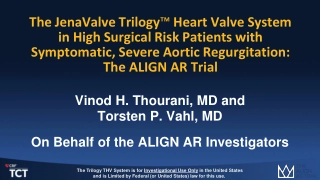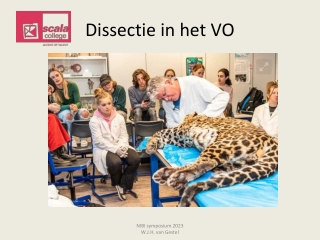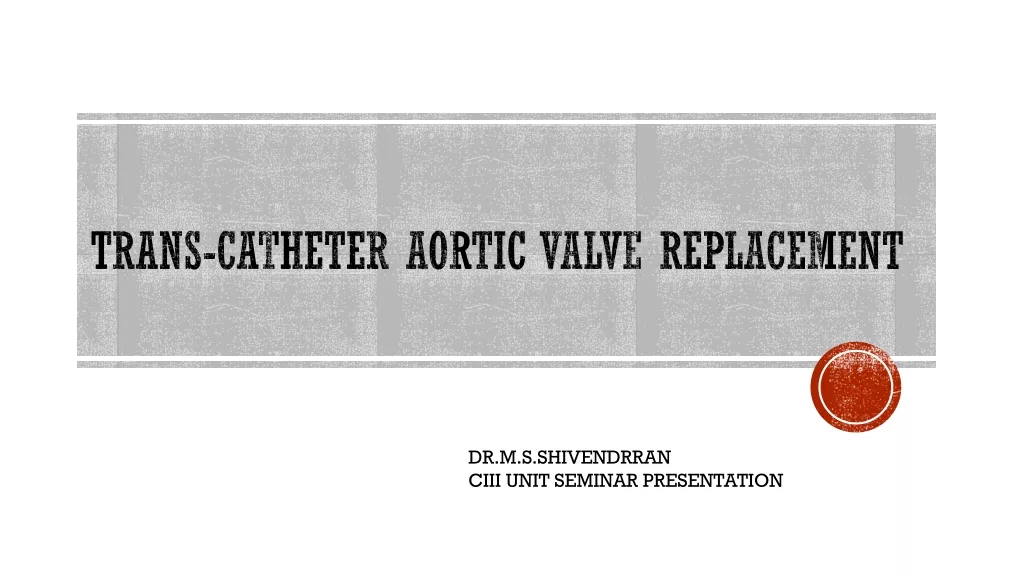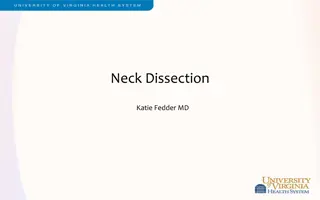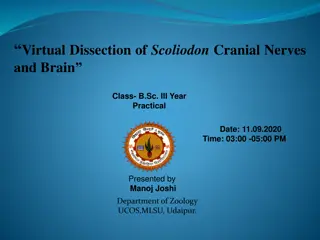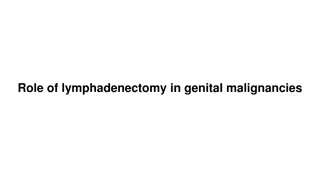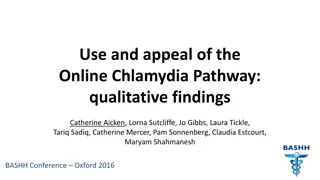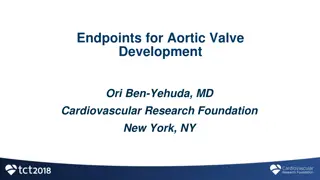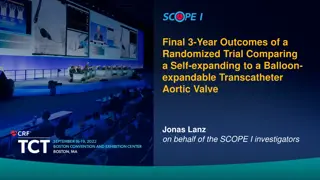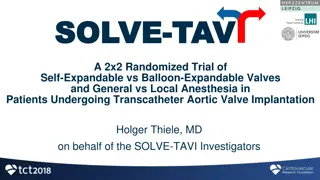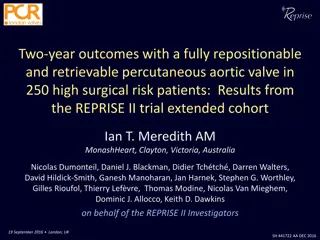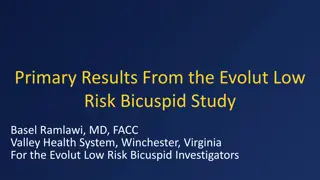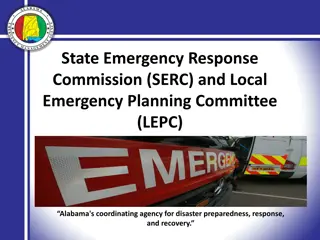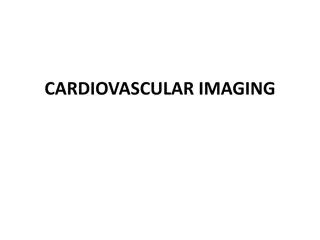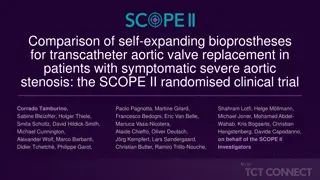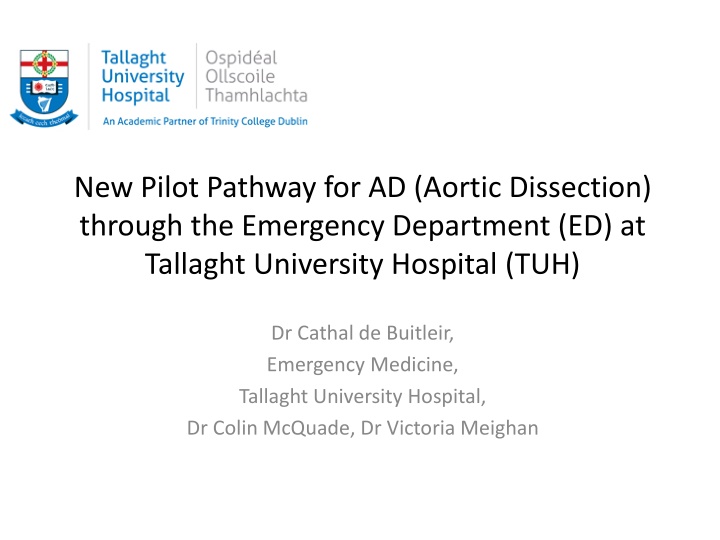
New Pilot Pathway for Aortic Dissection in Emergency Department at Tallaght University Hospital
A pilot initiative at Tallaght University Hospital aims to improve Aortic Dissection (AD) identification through increased imaging studies and multidisciplinary education, leading to early diagnosis, better patient outcomes, and no missed cases of AD post-implementation.
Download Presentation

Please find below an Image/Link to download the presentation.
The content on the website is provided AS IS for your information and personal use only. It may not be sold, licensed, or shared on other websites without obtaining consent from the author. If you encounter any issues during the download, it is possible that the publisher has removed the file from their server.
You are allowed to download the files provided on this website for personal or commercial use, subject to the condition that they are used lawfully. All files are the property of their respective owners.
The content on the website is provided AS IS for your information and personal use only. It may not be sold, licensed, or shared on other websites without obtaining consent from the author.
E N D
Presentation Transcript
New Pilot Pathway for AD (Aortic Dissection) through the Emergency Department (ED) at Tallaght University Hospital (TUH) Dr Cathal de Buitleir, Emergency Medicine, Tallaght University Hospital, Dr Colin McQuade, Dr Victoria Meighan
Background AD is an uncommon cardiovascular emergency that can be difficult to diagnose. Missed diagnosis has catastrophic consequences. A high index of suspicion, prompt diagnosis and management are imperative to optimise patient outcomes. The mortality rate for acute AD increases by 1% per hour in the first 48 hours from onset of symptoms .If recognised, AD can be treated with survival to discharge quoted at 85-90%. Atypical presentations and lack of awareness contribute to missed diagnosis. In our institution, following a missed aortic dissection, we implemented a QIP to raise awareness, improve triage and trigger diagnostic imaging earlier and more frequently. Aim To improve identification of aortic dissection and prevent misdiagnosis in patients presenting to TUH ED by increasing awareness and increasing the volume of diagnostic scans requested and performed within 12 months. Change initiative Pilot pathway for increased definitive imaging (approximately 8 diagnostic CT scans requested per month) with collaboration between the ED and Radiology. Recognition that there will be more negative scans performed. Raised awareness for new pathway with multidisciplinary simulation based medical education.
PDSA Cycles Audit of diagnostic scans performed: aortic dissection detection rate and missed rate. Agreed collaboration between ED & Radiology, educational program designed & delivered. Review of data and the pathway at 3, 6 and 12 months, comparison to baseline data. Acute floor meeting, review of data, consideration of continuation of protocol. Results Number of Scans for AD Total: 170 Number of Scans for AD from ED: 149 Number of Months meeting quota of 12: 6 months Number of months meeting 2/3 quota of 8: 3 months Number of Positive Scans: 7 3 Type A dissection (identified by ED) 1 Type B dissection (identified by ED) 2 AAA rupture (identified by ED) 1 TA ulceration (identified by Team) Number of Missed AD Identified: 0 Number of Educational Programs: 2
Sustainment It is intended that this project should go forward as the accepted pathway with continued educational initiatives in the ED to maximise the monthly quota of imaging studies. Value to patients 4 de novo cases of AD were detected as a direct result of this dedicated multidisciplinary program. 3 other emergent/urgent conditions were also diagnosed due to the increase in imaging studies being performed. Most importantly there were no cases of missed aortic dissection following the initiation of the pathway. Spread This initiative could be replicated in any Emergency Department that does not have a pathway for the recognition & diagnosis of AD.

